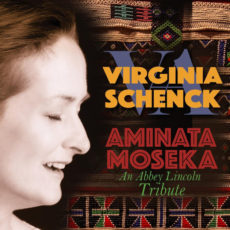
Review: Virginia Schenck | Aminata Moseka
Whenever I hear the word ambitious used by critics, I take pause, because it rings of a generosity that references an artist who has made a conscious decision to cover the music of an icon. The artist is often convinced that they have the chops to give a new life to the music; however, they are often the singers who release the adequate. And then there are those vocalists who are the light at the end of the tunnel and successfully walk into posterity. This offering by Virginia Schenck, however, happens to be a case of the latter and this is her moment.
The last time I saw this talented interpreter of lyrics I was amongst a gathering of jazz enthusiast under a beautiful Atlanta evening sky. During her set while singing Caged Bird, providence stepped forward and a small flock of birds answered her call with an appropriate and timely response. I knew a higher power was at work and everyone felt the energy pass throughout the audience. There are very few occasions when I experience a connection with nature in an urban setting as I did that night.
So to choose to pay homage to a poet of Abbey Lincoln stature was not only adventurous but exhibited a resolve that resulted in a highly rewarding experience. As I sat listening to Virginia’s delivery, with each composition hope blossomed again and again into a blissful reality. This was no mere one or two listens to this compendium of songs, but a dozen or more at different times in light and darkness, at different levels of volume and not all songs at the same time. I became engrossed in the conversation between musicians and heard the joy and pain, the laughter and sadness, the troubles and the victories as each song unfolds and began feeling the spirit of Abbey in every word from this messenger.
Though the subtitle states this recording is a tribute, this is so much more. It is a conversation between Abbey and Virginia. If you are familiar with Ms. Lincoln, then you know each vocalist is holding her own tempo and pacing within the understanding of the lyrics. Ms. Schenck’s choice of compositions were well thought out, with a precision that compliments her voice and clearly represents thirteen of Abbey’s best. To be true to the emotion and exhibit every side of the composer, these musicians invite you to be privy to the conversation between poet and vocalist.
Virginia hangs with a few of Atlanta’s best in the recording studio for a session that may appear perfunctory, however, it is the banked talent that makes it look and sound effortless in their execution that allows one to hear the voice until it’s time for the musicians to shine. With Kevin Bales tickling the 88, Rodney Jordan walking the bass, Marlon Patton keeping time on the drums and their special guest on alto saxophone Kebbi Williams, they bring a fresh breath of interpretation to these 13 songs. It is here that we hear the musical dialogue between the rhythm section and Virginia as they playfully emote their understandings. Kebbi’s frenetic improvisation keeps pace, adding complementary emphasis to Schenck’s spoken word of The River.
The arrangements. Listen but listen most carefully and you will hear the subtleties in the playing of piano, bass and drum that will entice you to desire more. This project goes beyond the borders of convention as collectively and individually each musician contributes their thoughts to each song that will touch, move and inspire each listener differently.
So, suffice it to say, Ms. Schenck has made a joyful noise in honoring one of America’s preeminent lyricists by crossing the borders of time, race and emotion with Aminata Moseka. She has raised the bar a few feet and what she leaves behind is an indelible audible mark on the industry that she loves. I would be remiss if I didn’t compel you to sit and listen, then read the liner notes for context, then listen again to truly hear the magic of Virginia and company talking to the sun.
carl anthony | notorious jazz | august 28, 2017
Give A Gift Of Jazz ~ Share ![]()
#preserving genius
More Posts: bandleader,history,instrumental,jazz,music,review
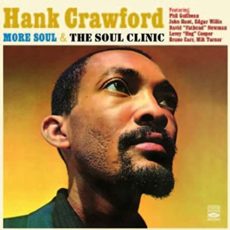
Daily Dose Of Jazz…
Leroy “Hog” Cooper was born on August 31, 1928 in Dallas, Texas and started his career touring with Ernie Fields’ territory band from 1948 to 1951. With his childhood friend David “Fathead” Newman, the two played together in 1954 in the saxophone section backing Lowell Fulson on his first single Reconsider Baby for Chess Records.
In 1957, Newman recommended Cooper to Ray Charles who joined the band the same summer as bassist Edgar Willis, both musicians staying on with Charles for some twenty years. He also played, recorded or toured with Lightnin’ Hopkins, Clarence “Gatemouth” Brown, The Righteous Brothers, Dr. John, Del Shannon, Joe Cocker and Bobby Short..
Leroy recorded not only with Ray Charles but also with Newman, Hank Crawford, Curtis Amy, Kenny Neal, Noble “Thin Man” Watts and Nat Adderley. Moving to Orlando, Florida baritone saxophonist Leroy Cooper performed locally in Orlando till he passed away on January 15, 2009 with the Smokin’ Torpedoes & Josh Miller Blues Band.
More Posts: saxophone
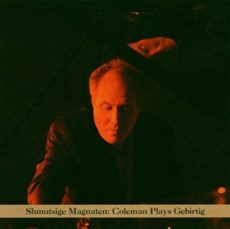
Daily Dose Of Jazz…
Anthony Coleman was born on August 30, 1955 in New York City and didn’t begin to study piano until the age of thirteen with Jaki Byard. He attended the New England Conservatory of Music and studied with George Russell, Donald Martino and Malcolm Peyton.
Coleman has collaborated with guitarist Elliott Sharp, trumpeter Dave Douglas, accordion player Guy Klucevsek, composer David Shea, former Captain Beefheart band member Gary Lucas, classical and klezmer clarinetist David Krakauer, guitarist Marc Ribot, bassist Greg Cohen, drummer Joey Baron and saxophonist Roy Nathanson.
He has toured with his groups Sephardic Tinge and Selfhaters throughout Europe, in the 1990s and the early 2000s. His Disco by Night was his first major solo record released by Japan’s Avant Records in 1992. He released duo albums, The Coming Great Millenium, Lobster & Friend, and I Could’ve Been a Drum with Roy Nathanson, that typify his free playing style as well as his multi-instrumental capability. Coleman and Nathanson have performed all over the U.S. and Europe. His album The End of Summer features his NEC Ensemble Survivors Breakfast.
Avant-garde pianist Anthony Coleman has released 15 albums as a leader, 33 as a sideman, appeared in four documentaries, has written four compositions, has taught theory and composition at Bennington College, is on the faculty of the New England Conservatory of Music and Mannes College New School for Music, writes articles for All About Jazz and Bomb magazine and continues to perform, compose and record.
More Posts: piano
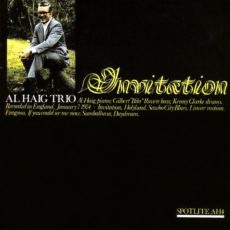
Daily Dose Of Jazz…
Gilbert Bibi Rovère was born on August 29, 1939 in Toulon, France and grew up in Nice, where he also attended the Conservatory beginning in 1954. He became part of the jazz scene there and for 17 years played the San Remo Festival.
In 1956, a move to Paris saw him working in the jazz clubs and by 1957 he started playing the double bass with Barney Wilen. Over the coming years he accompanied Duke Ellington, Sonny Rollins and Billie Holiday with Mal Waldron. Between 1962 and 1974 he was always part of the combos of Martial Solal and between 1962 to ‘63 he joined Bud Powell, Kenny Drew, Johnny Griffin, Dexter Gordon and Kenny Clarke.
During the Sixties Bibi went on to play with Art Simmons and Jean-Luc Ponty on his first album Jazz Longplaying. He also worked with the Swingle Singers, René Thomas and Cannonball Adderley. In 1966 he received the Prix Django Reinhardt.
During the Seventies he accompanied Al Haig on his album Invitation and in 1978 he retired from the music industry only to become re-active eight years later, performing with Bud Shank and Jackie McLean. In 1990 he played on Steve Grossman’s album My Second Prime.
On March 13, 2007 double bass and violincello player Bibi Rovère passed away in Menton on the French Riviera.
More Posts: bass,violincello
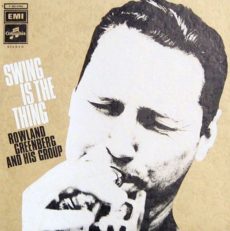
Daily Dose Of Jazz…
Rowland Charles Wentworth Greenberg was born on August 28, 1920 in Oslo, Norway who first began as one of the country’s leading cyclists. He was Oslo champion at 17 and the following year he won the team championships at the junior National Championships. Turning to music he fashioned his trumpet style was inspired by the English trumpeter Nat Gonella, and by 1939 he was guesting in leading orchestras such as the Hot Dogs and Funny Boys.
Making several trips to England between 1938 and 1939 with Vic Lewis and George Shearing, he was a central part of Oslo’s swing-jazz milieu. He led his own Rowland Greenberg Swing Band from 1939 to 1941 with Arvid Gram Paulsen on sax, Lulle Kristoffersen on piano and Pete Brown on drums. He also led his Rowland Greenberg Rytmeorkester from 1940 to 1944 with tenor saxophonist Gordon Franklin, Arvid Gram Paulsen on alto sax, Robert Normann on guitar, Kjell Bjørnstad, Frank Hansen, Lyder Vengbo on trombone, Fred Lange-Nielsen on bass. He release an album in 1942 that was banned by the German regime, and he was jailed for breaching the Rytmeklubbforbundet by viewing jazz films 1943.
After his release Rowland became active in Sweden with Cecil Aagaard, Thore Erling and Malte Johnson and in England with Jimmie Woode and Sam Samson. He toured Norway with his own band for two years beginning in 1948 playing bebop to the country. He was a part in the All-Star Trumpets session at the 1949 Paris Jazz Festival with Miles Davis, Bill Coleman, Jimmy McPartland and Aime Barelli, played with Charlie Parker, Louis Armstrong, and Down Beat gave him the first chart placing of his career. During the Fifties he played extensively in the orchestras led by Egil Monn-Iversen, Leiv Flisnes and Terje Kjær, led his own orchestras including Mikkel Flagstad on piano, Totti Bergh on saxophone, Knut Young on bass, Ivar Wefring on piano, Bjørn Krokfoss on drums until 1981, and played with Ben Webster and Teddy Wilson.
Trumpeter Rowland Greenberg recorded three albums as a leader and won two jazz awards before passing away on April 2, 1994.
More Posts: trumpet





